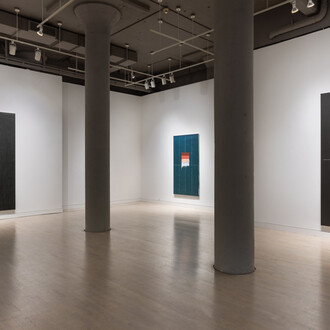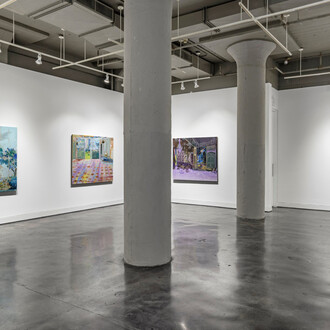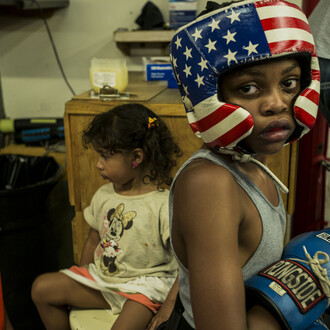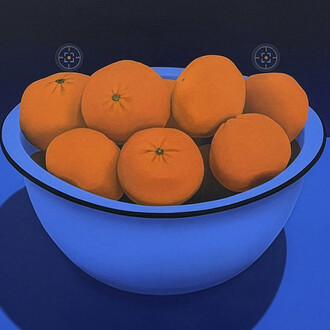Locks Gallery is pleased to present a two-person exhibition of sculptures by Norwegian textile artist Hanne Friis (b. 1972) and renowned sculptor Lynda Benglis (b. 1941). Hanne Friis / Lynda Benglis presents a dialogue between two generations of artists driven by material exploration who share a desire to merge process and form. This is Friis’ first exhibition in the U.S. and is accompanied by a 112-page catalog with an essay by art historian and critic Amanda Gluibizzi.
In her sculptures, Friis utilizes natural and synthetic fabrics to create amorphous, intricately patterned forms made of folds, spirals, and twists. These hand-sewn works are dense and precisely woven so as to appear bulbous and on the verge of transformation, evoking processes of growth and decay. The artist has said of the sculptures, “I increasingly see vitality and strength in them – there is so much power in all living things”. Some directly reference the natural world, such as The juice from the trees II (2019), which features canvas dyed with oak acorns. Others mock nature using synthetic materials, such as The mountain (2022), which transforms faux leather into an organic, corporeal mass.
Benglis’ sculptures are widely known for their free flowing energy despite her use of industrial materials. Pleated bronze, nickel, and chrome appear weightless on the walls, suspended between contraction and expansion. Her work often transforms unwieldy materials into buoyant images. She describes her early wax paintings as “seeds, [...] something that could explode like a butterfly out of its cocoon”. Knotted wall sculptures such as Tukki (1982) and Kearny street bows and fans (1985) contort aluminum and copper into elegant shapes that defy the force of gravity.
This abiding flow of energy and matter captured is echoed in both artists’ paradoxical use of materials. Similarly yet in a different vein to the buoyancy of Benglis’ heavy industrial materials, Friis transforms loose fabrics into hard, compact masses by means of ruffling, bundling, and folding. Together, both artists’ sculptures challenge each other and their materialities, exploring notions of the infinite transformation of matter as well as topographies of the human body and natural world.
Hanne Friis (b. 1972, Oslo, Norway) studied sculpture and painting at the Academy of Fine Arts in Trondheim from 1992 to 1996 before specializing in textile art. Friis has exhibited worldwide, including a major solo exhibition at the Vigeland Museum in Oslo, Norway, and most recently, a major installation at the KODE Museum in Bergen. Her works are included in a number of important public and private collections including the National Museum of Art, Oslo, Norway; National Museum of Decorative Arts, Trondheim, Norway; Haugar Kunstmuseum, Tønsberg, Norway; West Norway Museum of Decorative Arts, Bergen, and the Norwegian Parliament, Oslo. She is represented by Marie Wettergren Galerie in Paris, France.
Lynda Benglis (b. 1941, Lake Charles, Louisiana) has been critically acclaimed as one of the leading visual artists since the 1960s. She is best known for subverting prevailing ideologies about art through her poured latex floor paintings, wax pieces, metallic knots and pleated metal wall sculptures. Benglis received her BFA from Newcomb College in 1964 and continues to work between New York, Santa Fe, Greece, and India. Her 2009–2011 traveling retrospective visited six venues in Europe and the United States, including the Museum of Contemporary Art, Los Angeles and the New Museum, New York. Benglis’ work is in numerous public collections including the Dallas Museum of Art; the Guggenheim Museum of Art, NY; the Hirshhorn Museum and Sculpture Garden, Washington, D.C.; the Los Angeles County Museum of Art; the Los Angeles Museum of Contemporary Art; Metropolitan Museum of Art, NY; the Museum of Fine Arts, Boston; the Museum of Fine Arts, Houston; the Museum of Modern Art, NY; the National Gallery of Art, Washington D.C.; the Philadelphia Museum of Art; the San Francisco Museum of Modern Art; the Tate Modern, London; the Walker Art Center, MN; and the Whitney Museum of American Art, New York.
















